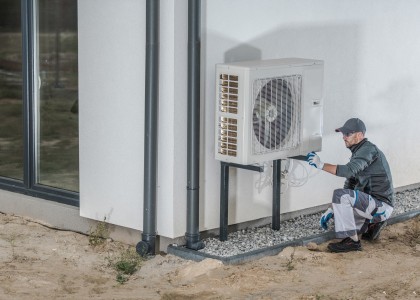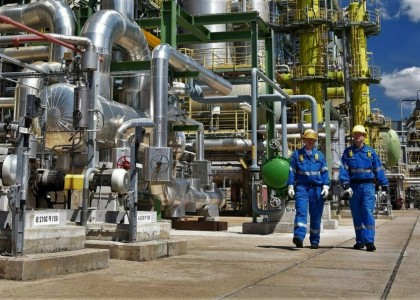While the world is necessarily focused on COVID-19 and our worsening economy, these crises provide lessons and insights for future work to address the looming crisis of climate change that are worth discussing as we approach Earth Day tomorrow. The first Earth Day happened 50 years ago. Much has been accomplished since 1970 in terms of making our air and water cleaner while keeping our energy use in check. However, the climate crisis shows that our work ahead is much larger still. The COVID-19 pandemic offers clues on how we can rebuild our economy and also address climate change.
First, the global response to COVID-19 shows that when the world is faced with a crisis, it can act. While our actions have been imperfect, they have nonetheless “flattened the curve” in many places and almost certainly saved millions of lives. Many governments and people have reacted with extraordinary measures and uncharacteristic speed. Yes, the changes were so quick and necessarily aggressive that they came with significant economic cost. As we think about how best to respond to the global climate crisis, we hope we can incorporate some of the positive examples of collective action and rapid response we marshalled for COVID-19 while taking care to avoid large economic dislocations.
Second, COVID-19 is so bad in part because we ignored the warning signs from SARS, MERS, and Ebola and were woefully unprepared. If we had planned to address pandemics as the World Bank and others had urged (e.g., see here), COVID-19 would still be bad, but not nearly so destructive. We have also seen the warning signs for climate change. As with pandemics, it’s best to plan and invest to avert the worst-case scenarios.
Third, the virus illustrates that while local and state action are essential, we need a coordinated national and international response to a global crisis. Local, state, and national governments and international organizations have all been vital parts of the COVID-19 response, and there have been some notable examples of coordination, such as among medical researchers around the world. But sometimes lack of coordination has led to inefficient distribution of critical supplies, failure to adopt best practices, and preventable spread of the virus. Slashing global greenhouse gas emissions will similarly require concerted global action. As we address climate change, we can learn from the best of state, regional, national, and international efforts to address COVID-19.
Fourth, in addition to containing sickness and reducing deaths, our actions in response to COVID-19 have cleared the air (e.g., India’s air is cleaner than it has been for many years), unclogged our streets, and reduced power demand. To be clear, this current shutdown is neither a climate solution nor a guide to one. We want our economy to bounce back, and as it does, emissions and traffic will increase. But there are things we can do to keep energy needs, congestion, and pollution – including carbon – from totally rebounding as we emerge from the crisis. For example, COVID-19 has changed the way we live, including telework, teleschool, and telemedicine. Perhaps we can continue some of these practices some of the time. Further, reducing pollution could make the next pandemic less deadly. Researchers at the Harvard School of Public Health have found that communities with lower levels of fine particulate pollution have lower death rates from COVID-19.
Finally, as we continue to address the current COVID-19 and economic crises, there are things we can do to also address climate change. For the immediate health crisis, we need to continue to shelter in place while building up testing and contact tracing so that any new outbreaks can be quickly tamped down. When it is time to open our economy, economic stimulus will be needed, likely on a larger scale than was employed during the 2007-2009 Great Recession. Such efforts should favor clean parts of our economy over dirty parts. And our efforts need to extend beyond the short-term (next year or two) to the medium-term (to about 2025) and longer-terms (to 2030 and beyond) as well.
Several successful programs from the Great Recession a decade ago show the way, such as successful efforts to weatherize about a million low-income homes and tripled tax credits to spur sales of efficient equipment and services. We can learn from past mistakes, too. While the weatherization efforts were successful, many of the workers hired and trained were laid off as funds were spent. This time we should establish longer-term programs to continue providing weatherization services to low- and moderate-income households so that jobs can be retained and more households can benefit. Similarly, a set of stimulus actions now could aid retooling of industrial plants to provide long-term jobs while reducing energy use and emissions and expanding infrastructure for and sales of electric vehicles.
This year, as ACEEE marks its 40th anniversary, we have issued a Call to Action to scale up energy efficiency to combat climate change and build a clean energy future that benefits everyone. While the COVID-19 pandemic has caused people and the economy a lot of pain, it has also forced us to take urgent, bold action. Let us learn from that action so we can avoid the worst long-term impacts of the climate crisis.
For further discussion of these issues:
Register for the Earth Day Webinar



